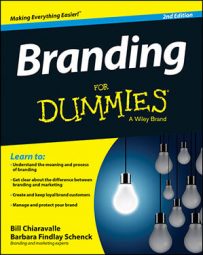In great print ads, the headline, copy, and design work together to grab attention, inspire interest, promote a brand promise, prompt the desired action, and advance the brand image. That’s a lot, but it’s not too much to ask. In fact, it’s what you need to demand out of every print ad you place.
To achieve success, each print ad must include three powerful components:
Headline
Copy
Design
Punching up headline power
Four out of every five print ad readers read only the headline, so write one that’s capable of targeting your prospects, grabbing attention, and making people want to read the rest of your story.
Plenty of great ads have no headlines, but instead they feature an amazing photo or illustration that seizes reader attention. Unless you can afford a graphic element with sure stopping power, use a headline every time.
Headlines can be long or short. They can sit at the top, in the middle, or at the bottom of the ad. They can feature a single word, a phrase, a sentence, or a question. It isn’t the headline form that matters. It’s the function. Here’s some headline advice to follow and traps to avoid.
| Do | Don’t | General Advice |
|---|---|---|
| Feature your most powerful point. | Feature a clever statement that requires people to read on to learn what you’re talking about. | Use your headline to convey your primary message, and use copy to back up your claim. |
| Feature benefits rather than features. | List the bells and whistles you offer without telling what they mean to the customer. | Twice as fast is a feature. Get the job done in half the time is a benefit. |
| Convey a positive message. | Focus on the problem you solve. | Get a great night’s sleep presents the solution. Eliminate insomnia presents the problem. |
| Use powerful, compelling language. | Use technical terms, blah- language, or words people won’t understand. | Power words include free, new, save, better, how, now, easy, guarantee, health, love, save, safety, and, most important of all, you. |
| Involve the reader. | Talk to yourself. | Save 20% during our 20th anniversary celebration beats We’re celebrating our 20th anniversary. |
| Be clear and credible. | Be outrageous or clever to the point of being incoherent. | At a glance, seize attention, make a point, and advance your brand promise. |
Convincing copy
Effective image ads sometimes contain no copy at all. They rely on the strength of the brand name and logo, along with a captivating photo or other image, to advance the brand and expand awareness, credibility, and loyalty. Look at fashion ads for good examples.
Most advertisers need their ads to ignite measurable action, though, and for that reason, most ads count on copy to play a pretty important role. If you expect your ad to generate consumer response — in the form of changed opinions, enhanced interest, requests for more information, inquiries about price or options, business visits, or other actions that move consumers toward a buying decision — include ad copy that’s up to the task.
When writing copy, keep these points in mind:
Be sure the first sentence is capable of capturing interest and enticing the reader to want to know more.
Be sure the second sentence lures the reader into the third sentence, with each additional sentence advancing your brand promise and building more credibility and trust.
Include an invitation to take action.
Inspire action with an incentive.
Call for action.
Design for impact
Simplicity of design is a key element. Flip through the pages of any newspaper or magazine. The ads that catch your eye are likely those with few elements, most striking visuals, and clean, attention-grabbing looks.
If you’re investing a significant amount of money in ad buys, seriously consider investing in the creation of professionally designed ads.
As you create or review ad designs, consider this advice:
Use art. Readers flip through publications at rapid-fire speed, stopping only when a headline or visual grabs their attention.
In some ads, the art shows the product being advertised. In other cases, it shows the product in use or represents the benefits the product delivers. In yet other cases, the art relies on what’s called borrowed interest by featuring a photo or illustration that indirectly relates to the ad message.
For example, a company featuring Tuscan vacations may feature a photo of Florence (the product), it may show a photo of people sitting near a villa overlooking a Chianti landscape (the product in use), or it may feature an illustration of wine glasses or grape vines (borrowed interest).
Keep it simple. On a crowded page, the clean ad with open space wins attention for the simple reason that it gives the reader’s eyes a place to find a moment’s refuge from the visual overwhelm. To streamline your ad design:
Frame your ad. Rather than running copy or design elements to the edge of your ad space, isolate your ad with unfilled space or a strong border.
Eliminate unnecessary elements. Ads that win awards for their effectiveness almost always feature design restraint as opposed to design overload. Readers’ eyes sweep across ads, usually from upper left to lower right. In a matter of moments they note the message, the advertiser logo, and whether or not they want to take a closer look.
Size your ad to match your message. If you’re promoting a $1.99 offer, a small-space ad may work just fine. But if you’re launching a brand and want to say, in essence, “Hello, world. We’re going to be a big deal, and here’s why,” size your ad accordingly.
Project a single look and voice in your brand’s ads. For example, use the same typestyle in all headlines, the same border design, the same style of illustrations, the same personality, and the same placement of your logo.

